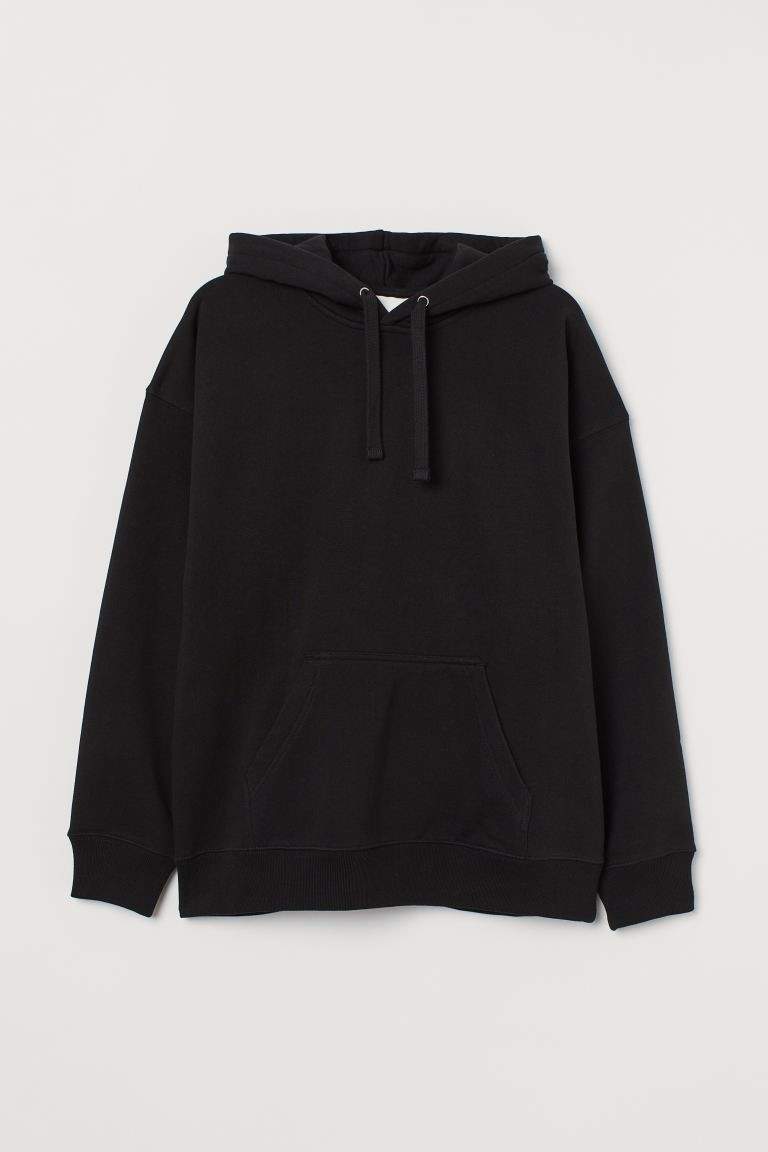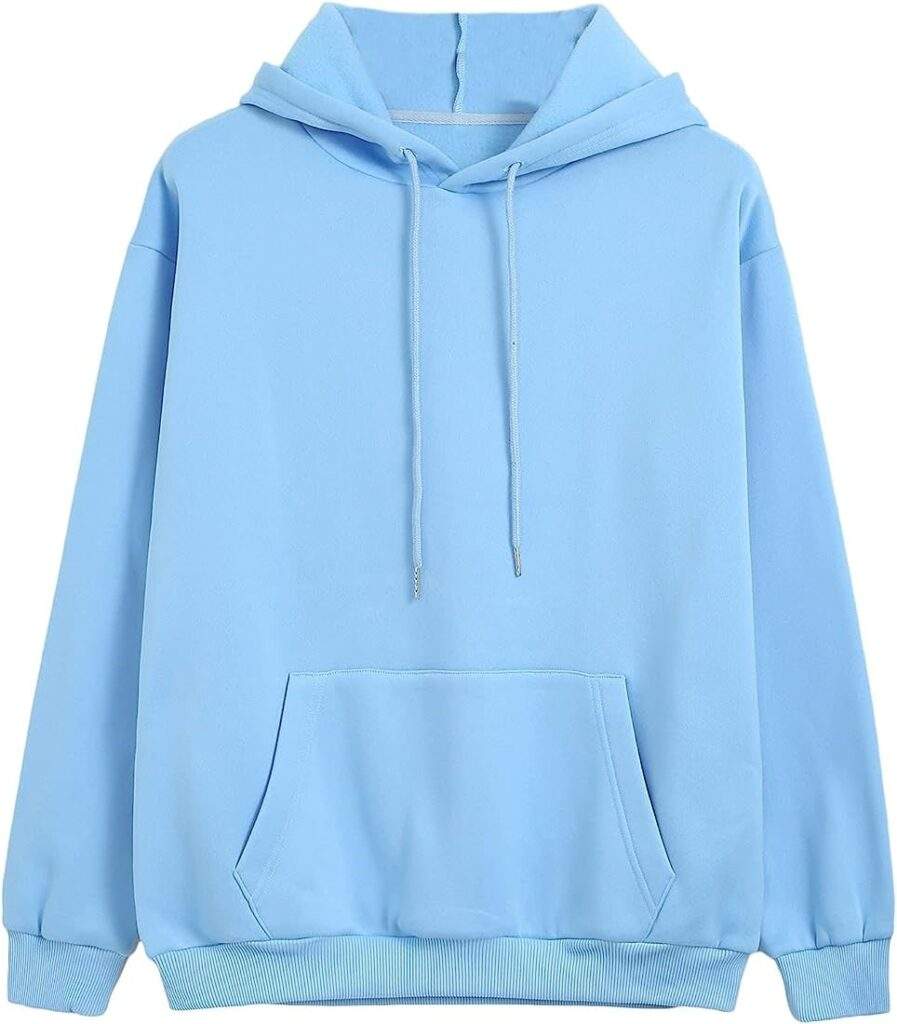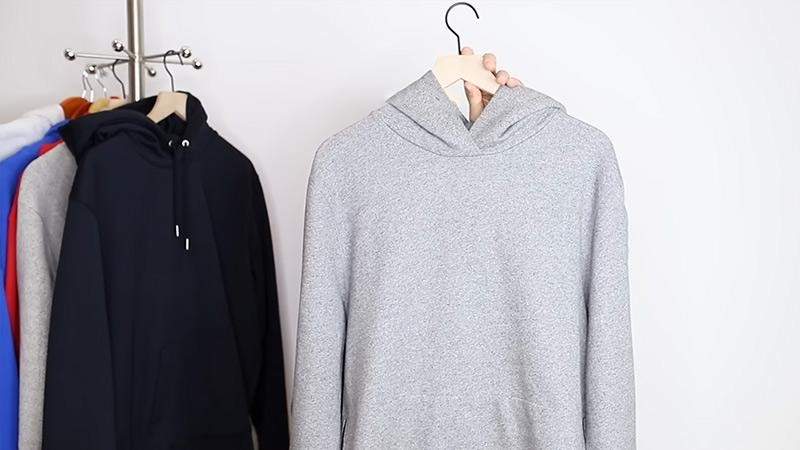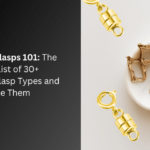Hoodie Fabrics: Which Hoodie Material is Right for You?
When choosing the perfect hoodie, understanding the various fabric options is helpful. The material used in a hoodie not only affects its overall comfort but also determines its durability, breathability, and style.
In this comprehensive guide, we will learn about hoodie fabrics and explore the pros and cons of 10 different material types. Whether you’re a fashion enthusiast, an outdoor adventurer, or someone seeking cozy comfort, this article will equip you with the knowledge you need to make an informed decision when selecting your next hoodie.

Factors to Consider Before Customizing
Consider these to ensure you achieve the desired outcome before customizing your hoodies.
Durability: The durability of the fabric is crucial when making hoodies. Ensure the material is strong enough to withstand regular wear and frequent washing. Choose fabrics known for their durability to ensure your customized hoodies last long.
Breathability: Consider the breathability, especially if you intend to use hoodies for activities that may make you sweat. Fabrics with good moisture-wicking properties and breathability will help keep you comfortable by absorbing sweat and allowing airflow. Even for hoodies designed for warmth in winter, breathability is essential to prevent overheating.
Comfort: Comfort is crucial for any clothing item, including hoodies. Opt for soft, comfortable, and non-irritating skin materials. Additionally, consider the flexibility and freedom of movement the fabric provides. Strike a balance between warmth and flexibility to ensure the hoodie is comfortable for extended periods.
Warmth: The material is crucial if you want hoodies for colder weather. The fabric’s ability to retain heat is a factor. Materials with higher GSM (Grams per Square Meter) tend to be thicker and provide better insulation. For winter hoodies, aim for a GSM of around 350-400, while spring and autumn hoodies may require a GSM of 250-300.
Colorfastness: Ensure the fabric has good colorfastness, meaning it retains color even after repeated washes. It is helpful if you plan to incorporate vibrant or intricate designs on your customized hoodies. Check the fabric specifications for details on colorfastness and consider consulting with the supplier or customization service.
10 Hoodie Materials

Cotton is a popular fabric choice for hoodies due to its natural properties and comfort.
- Durability: Cotton is known for its durability, making it suitable for regular wear and frequent washing. It can withstand the rigors of everyday use, ensuring your customized hoodie lasts for a long time.
- Breathability: Cotton is a breathable fabric that allows air circulation, making it ideal for hoodies intended for various activities. It helps to regulate body temperature and prevents excessive sweating, providing a comfortable experience.
- Comfort: Cotton is soft, gentle on the skin, and non-irritating, making it a comfortable choice for hoodies. It provides a cozy feel, keeping you comfortable throughout the day.
- Warmth: While cotton is not as warm as some heavier fabrics, it can provide sufficient heat in mild to moderate temperatures. Layering or adding fleece lining can enhance its insulation properties for cooler weather.
- Moisture Absorption: Cotton has good moisture absorption properties, making it suitable for hoodies intended for exercise or outdoor activities. It can absorb sweat and keep you dry, preventing discomfort caused by dampness.
- Customization: Cotton fabric is relatively easy to customize, allowing various printing and embroidery techniques. It offers a smooth surface for designs and ensures good color vibrancy.
- Care Instructions: Cotton hoodies are generally easy to care for. Most can be machine-washed and tumble-dried, making maintenance hassle-free.
Polyester is another commonly used fabric for customized hoodies.
- Durability: Polyester is known for its excellent durability and resistance to stretching, shrinking, and wrinkles. Hoodies made from polyester are more likely to retain their shape and withstand regular wear and washing.
- Moisture-wicking: Polyester draws moisture away from the body. It makes it suitable for hoodies for physical activities or outdoor sports, as it helps keep you dry and comfortable by allowing sweat to evaporate quickly.
- Breathability: While polyester may not be as breathable as natural fibers like cotton, advancements in fabric technology have introduced breathable polyester blends that offer improved airflow and ventilation. Look for hoodies made from moisture-wicking polyester blends to ensure better breathability.
- Quick-drying: Polyester is a quick-drying fabric, making it convenient for hoodies exposed to moisture or rain. It dries faster than natural fibers, allowing quicker recovery after getting wet.
- Colorfastness: Polyester has excellent color retention. The fabric is resistant to fading, ensuring your customized designs remain vibrant and intact even after repeated washes.
- Wrinkle resistance: Polyester is a relatively wrinkle-resistant fabric. The hoodies made from polyester tend to require less ironing or pressing to maintain a smooth appearance.
- Customization: Polyester fabric offers a smooth surface, making it suitable for various customization techniques such as screen printing, heat transfer, or sublimation printing. The fabric’s smoothness allows for crisp and detailed designs.
- Care Instructions: Polyester hoodies are generally easy to care for. They can be machine washed and dried without much fuss. However, follow the specific care instructions to maintain the fabric’s quality and longevity.
Nylon is a synthetic fabric for customized hoodies.
- Durability: Nylon has exceptional strength and durability. It is highly resistant to abrasion, tearing, and stretching, making it a long-lasting fabric choice for hoodies. Nylon hoodies can withstand frequent use and are resistant to wear and tear.
- Moisture-wicking: Nylon draws moisture away from the body and allows it to evaporate quickly. This feature makes nylon hoodies suitable for physical activities or outdoor sports, as they can help keep you dry and comfortable.
- Lightweight: Nylon is a lightweight fabric, making it comfortable and easy to wear. It provides a non-bulky feel, making nylon hoodies suitable for layering or as a lightweight outerwear option.
- Wind and Water Resistance: Nylon has natural wind and water-resistant properties. Hoodies made from nylon can protect against light rain or wind, making them suitable for outdoor activities or as a lightweight outer layer in inclement weather.
- Quick-drying: Nylon fabric dries quickly, allowing for efficient moisture evaporation. It is beneficial for activities with sweat or moisture, as the hoodie will dry rapidly.
- Customization: Nylon can be challenging to customize compared to cotton or polyester. Its smooth and slippery texture may require specialized printing or embroidery techniques to ensure the designs adhere to the fabric. It is advisable to consult with experienced customization services familiar with working with nylon.
- Care Instructions: Nylon hoodies are generally easy to care for. Machine wash and dry without worry. However, it is essential to follow the specific care instructions provided by the manufacturer to maintain the fabric’s integrity and longevity.
Spandex, also known as elastane or Lycra, is a synthetic fabric often used with other materials for customized hoodies.
- Stretch and Flexibility: Spandex is highly elastic and known for its exceptional stretch and recovery properties. When incorporated into hoodies, it provides a comfortable and flexible fit that moves with your body. The addition of spandex allows the hoodie to stretch and retain its shape, ensuring a snug and form-fitting look.
- Comfort: Spandex offers a high level of comfort due to its stretchiness and ability to conform to the body. It allows for a wide range of motion, making it suitable for activities that require flexibility and mobility.
- Fit and Silhouette: Hoodies with spandex content can provide a sleek and fitted silhouette. The fabric hugs the body, accentuating the natural contours and creating a streamlined appearance.
- Moisture-wicking: While spandex itself is not known for its moisture-wicking properties, manufacturers blend it with other moisture-wicking fabrics, such as polyester enhance the overall performance of the hoodie. Combining spandex with moisture-wicking materials can help keep you dry during physical activities.
- Customization: Spandex can present challenges for customization techniques such as screen printing, as the fabric’s stretchiness may affect the print’s durability and appearance. Consult with experienced customization services familiar with spandex blends to achieve the desired results.
- Care Instructions: Spandex-blend hoodies typically require specific care to maintain elasticity and shape. It is advisable to follow the care instructions provided by the manufacturer, which may include washing in cold water, avoiding harsh detergents or bleach, and air drying or using low heat settings for drying.

Wool is a natural fiber helpful for customized hoodies, especially for colder weather.
- Warmth: Wool is known for its excellent insulation properties, making it an ideal choice for hoodies intended to provide warmth in colder temperatures. Wool fibers trap air, creating a layer of insulation that helps retain body heat and keep you cozy.
- Breathability: Wool is a breathable fabric that allows moisture vapor to escape, preventing overheating and excessive sweating. It helps regulate body temperature by wicking away moisture from the skin while maintaining insulation.
- Moisture-wicking: Wool has natural moisture-wicking properties. It can absorb and evaporate moisture, keeping you dry and comfortable. It can absorb up to 30% of its weight without feeling wet, making it suitable for activities that may cause perspiration.
- Durability: Wool is a durable and long-lasting fabric. It is resistant to wrinkles, creases, and pilling, ensuring customized wool hoodie maintains its quality even after extended use.
- Odor-resistant: Wool is naturally odor-resistant due to its ability to absorb moisture and inhibit bacterial growth. It makes it a choice for hoodies for extended periods without frequent washing.
- Natural UV Protection: Wool offers inherent UV protection, shielding your skin from harmful sun rays. It can help protect your skin from sunburn, making it suitable for outdoor activities.
- Customization: Manufacturers can customize wool through various techniques such as embroidery or patches. However, some printing techniques may not work well on wool fabrics due to their texture and thickness. Consult with customization experts to determine the most suitable methods for your wool hoodie.
- Care Instructions: Wool requires special care to maintain quality and prevent shrinkage. Use a gentle machine cycle with cold water or handwash. Air drying or a low heat setting prevents excessive shrinkage.
Rayon is an artificial fabric made from cellulose fibers derived from wood pulp. It is sometimes used for customized hoodies, offering unique properties.
- Softness and Comfort: Rayon is known for its soft and smooth texture, providing a luxurious feel against the skin. It offers a high comfort level, making it pleasant to wear for extended periods.
- Breathability: Rayon is a breathable fabric that allows air to circulate, keeping you cool and comfortable. It has moisture-wicking properties, which absorb and release sweat, allowing for better ventilation.
- Drapability: Rayon has excellent draping characteristics, which means it hangs and flows well on the body. It creates a flattering and elegant silhouette, enhancing the aesthetic appeal of customized hoodies.
- Versatility: Rayon can be blended with other fabrics to enhance specific properties. Mixing it with natural fibers like cotton can enhance its breathability and softness. Combining it with synthetic fibers like polyester can improve its durability and wrinkle resistance.
- Color Vibrancy: Rayon has good dyeing properties, resulting in vibrant colors. It makes it an excellent choice for customized hoodies where color options and customization are crucial.
- Care Instructions: Rayon hoodies typically require gentle care. Wash using a delicate cycle with cold water or handwash. Follow the specific care instructions provided by the manufacturer to maintain the fabric’s integrity.
- Customization: Manufacturers can customize Rayon through various techniques such as screen printing, heat transfer, or embroidery. However, due to its smooth texture and potential for shrinkage, it is advisable to consult with customization experts to ensure the best results.
- Shrinkage: Rayon tends to shrink when exposed to heat or improper washing methods. It is essential to handle rayon hoodies with care and follow the care instructions to minimize shrinkage.
Jersey is a knitted fabric commonly used for customized hoodies. It is versatile, comfortable, and offers a range of benefits.
- Comfort: Jersey fabric is known for its softness and comfort. It has a smooth and slightly stretchy texture, providing a cozy feel against the skin. Hoodies made from jersey offer a comfortable and relaxed fit.
- Breathability: Jersey has good breathability, allowing air to circulate through the fabric. It helps regulate body temperature by allowing heat and moisture to escape, keeping you cool and comfortable even during physical activities.
- Stretch and Flexibility: Jersey fabric has a natural stretchiness, providing movement and flexibility. It makes jersey hoodies comfortable and allows for a more range of motion.
- Durability: Jersey is a durable fabric that withstands regular wear and washing. It maintains its shape well and is less prone to wrinkling, making it suitable for everyday use.
- Moisture-wicking: While the jersey may not have moisture-wicking properties, you can blend it with moisture-wicking synthetic fibers like polyester to enhance its ability to manage sweat and keep you dry during activities.
- Customization: Jersey is a versatile fabric you can customize through various techniques such as screen printing, heat transfer, or embroidery. Its smooth surface allows for detailed designs, making it a popular choice for personalized hoodies.
- Weight and Thickness: Jersey fabrics come in different weights and thicknesses, allowing you to choose the appropriate option based on your desired level of warmth. Lighter-weight jersey is suitable for layering or warmer climates, while a heavier-weight jersey provides more insulation for colder weather.
- Care Instructions: Jersey hoodies are generally easy to care for. They can be machine-washed and dried, making maintenance convenient. However, follow the specific care instructions to preserve the fabric’s quality.
French terry is a knitted fabric for customized hoodies. It offers a unique texture and a range of beneficial properties.
- Texture: French terry has a soft and looped texture on one side, similar to regular terry cloth, while the other is smooth. This texture adds visual interest and a casual, laid-back aesthetic to customized hoodies.
- Comfort: French terry is known for its comfort. The looped texture provides a cozy and plush feel against the skin, making it a comfortable fabric choice for hoodies.
- Breathability: French terry offers good breathability, allowing air to circulate through the fabric. It helps regulate body temperature and prevents overheating, making it suitable for year-round wear.
- Moisture Absorption: French terry has excellent moisture absorption capabilities. The looped texture helps absorb moisture, keeping you dry and comfortable during physical activities or warm conditions.
- Versatility: French terry is a versatile fabric helpful for various hoodie styles. It can be lightweight or heavyweight depending on the thickness of the material, allowing for customization based on different weather conditions or personal preferences.
- Durability: French terry is a durable fabric that withstands regular wear and washing. It maintains its shape well and resists pilling, ensuring longevity for your customized hoodie.
- Customization: French terry is a popular choice for customization due to its smooth surface on one side. It can be easily customized through screen printing, heat transfer, or embroidery, allowing you to create personalized designs on your hoodie.
- Care Instructions: French Terry hoodies are generally easy to care for. They can be machine-washed and dried, making maintenance convenient.
Fleece is a popular fabric choice for customized hoodies, known for its warmth, softness, and comfort.
- Warmth: Fleece has exceptional insulation properties. It provides excellent warmth by trapping air within its fibers, creating a thermal barrier to help retain body heat. Fleece hoodies are particularly suitable for colder weather or when you need extra warmth.
- Softness: Fleece fabric has a plush and velvety texture that feels cozy against the skin. It offers a luxurious and comfortable feel, making it a favored choice for hoodies intended for relaxation or lounging.
- Lightweight: Despite its warmth, fleece is relatively light compared to other fabrics. It makes fleece hoodies comfortable and easy to layer, allowing versatility in various weather conditions.
- Breathability: Fleece has good breathability, allowing moisture and perspiration to escape. It helps regulate body temperature by allowing air circulation, reducing the risk of overheating or discomfort during physical activities.
- Quick-drying: Fleece is known for its quick-drying properties. It efficiently wicks away moisture, ensuring you stay dry even when engaged in active pursuits or damp environments.
- Durability: Fleece is a durable fabric that withstands regular wear and washing. It resists pilling and maintains its shape, making fleece hoodies long-lasting and reliable.
- Customization: Fleece provides a smooth surface suitable for various customization techniques such as embroidery, screen printing, or heat transfer. It allows for personalized designs on the hoodie with ease.
- Care Instructions: Fleece hoodies are typically easy to care for. It is simple to machine-wash and dry; maintenance is hassle-free.
Corduroy is a distinctive fabric that can add a unique touch to customized hoodies.

- Texture: Corduroy has raised parallel ridges or “wales” that run vertically down the fabric. This texture adds depth and visual interest to hoodies, creating a distinctive retro-inspired look.
- Durability: Corduroy withstands regular wear and tear. Its sturdy construction and tightly woven fibers make it resistant to abrasion, ensuring that corduroy hoodies maintain quality even with frequent use.
- Warmth: Corduroy is a relatively thick and heavy fabric, providing good insulation and heat. It is suitable for hoodies intended for colder weather or additional coziness.
- Breathability: While corduroy is not as breathable as lighter fabrics, it still allows for some air circulation. However, corduroy may not be as breathable as other options, such as cotton or fleece.
- Style and Versatility: Corduroy has a classic and timeless appeal. You can customize to create looks, from vintage-inspired designs to contemporary and fashion-forward looks. You can dress up or down, making them versatile for various occasions.
- Care Instructions: Corduroy hoodies typically require more care compared to other fabrics. Corduroy garments may need gentle washing, hand or a delicate cycle, to preserve the fabric’s texture and prevent excessive wear.
- Customization: Corduroy can be helpful for various techniques such as embroidery or patches. However, some printing techniques may not work well on corduroy fabrics because of ridged texture.
Consulting with customization experts can help determine the most suitable methods for your corduroy hoodie.
- Style Considerations: Corduroy hoodies are often associated with a more retro or vintage aesthetic. The fabric’s unique texture can add a touch of nostalgia and individuality to your customized design.
Polyester V Cotton hoodies
| Features | Polyester Hoodies | Cotton Hoodies |
| Fabric | Synthetic | Natural |
| Comfort | Soft and smooth | Soft and breathable |
| Moisture Wicking | Excellent | Good |
| Breathability | Moderate | High |
| Durability | Durable | Less durable |
| Wrinkle Resistance | Wrinkle-resistant | Prone to wrinkles |
| Shrinkage | Minimal | May shrink |
| Stretch | Good stretch | Limited stretch |
| Heat Retention | Good insulation | Less insulation |
| Customization | Holds colors well | Takes dyes easily |
| Care Instructions | Easy to care for | May require special care |
| Price | Affordable | Varies, can be higher for organic cotton |
Conclusion
Whether you’re looking for polyester or cotton hoodies, IgniteSupplyChain is your trusted partner for sourcing high-quality materials and manufacturing services. With their extensive network and expertise in the supply chain industry, IgniteSupplyChain can connect you with reliable suppliers and manufacturers specializing in hoodie production. They can assist you in finding the proper fabric, ensuring timely delivery, and meeting your specific customization requirements.
Don’t compromise on the quality and reliability of your hoodie sourcing. Connect with IgniteSupplyChain to discuss your sourcing needs. Visit their website or reach out to their dedicated team to start the process of creating custom hoodies that meet your exact specifications. Your satisfaction is their priority, and they are committed to helping you bring your hoodie designs to life.
For custom products manufacturing related queries please visit EverLighten.com
FAQs
There is no definitive "best" material for hoodies; it depends on personal preferences and specific needs. However, cotton and polyester are commonly used materials, each offering unique benefits. Cotton provides breathability and comfort, while polyester offers durability and moisture-wicking properties. The best material for a hoodie depends on factors such as desired comfort, style, and purpose of use. To choose a quality hoodie, consider the fabric's durability, comfort, and insulation properties. Look for well-constructed seams and attention to detail in the stitching. Additionally, check for reliable brand and customer reviews, and consider the specific features you desire, such as a lined hood or reinforced pockets. Yes, a blend of 80% cotton and 20% polyester is a popular and used fabric composition for hoodies. This blend combines the softness and breathability of cotton with the durability and moisture-wicking properties of polyester, offering a balance of comfort and performance. The ideal GSM (Grams per Square Meter) for a hoodie depends on personal preferences and the use. Generally, a GSM range of 250-350 is standard for hoodies. A higher GSM indicates a thicker and warmer hoodie, suitable for colder weather or added insulation. To determine the best hoodie size, measure your chest, waist, and hip circumference, then consult the brand's size chart for an accurate fit. Choose a size that offers a comfortable fit without being too tight or loose. Luxury hoodies have high-quality fabrics that are soft, durable, and stylish. The answer to which is better, 180 GSM or 200 GSM, depends on your preference and the purpose of the fabric. Generally, a higher GSM means a warmer, thicker, and more durable, while a lower GSM means a cooler, thinner, and more breathable fabric. However, other factors, such as the fiber type, the weave, and the texture, can also affect the quality and feel.What is the best material for hoodies?
How do I choose a quality hoodie?
Are 80 cotton and 20 polyester good?
Which GSM hoodie is best?
What hoodie size should I get?
What are luxury hoodies made of?
Vicuña wool: This is the most expensive wool in the world, made from the coat of the rare vicuña animal found in South America.
Baby cashmere: This is a rare and precious type of cashmere obtained from the undercoat of baby goats.
Cervelt: This is a premium fabric made from the downy undercoat of the New Zealand red deer.
Mulberry silk: This is the finest and most luxurious type of silk, produced by silkworms that feed on mulberry leaves. Which is better, 180 GSM or 200 GSM?



